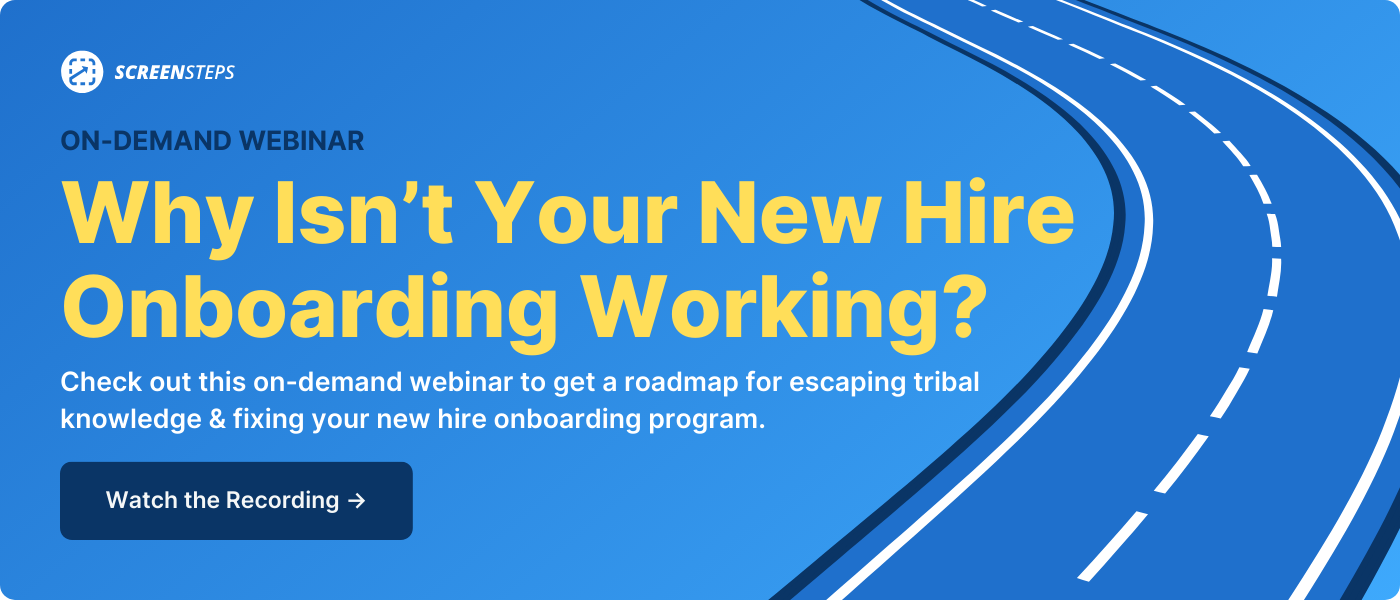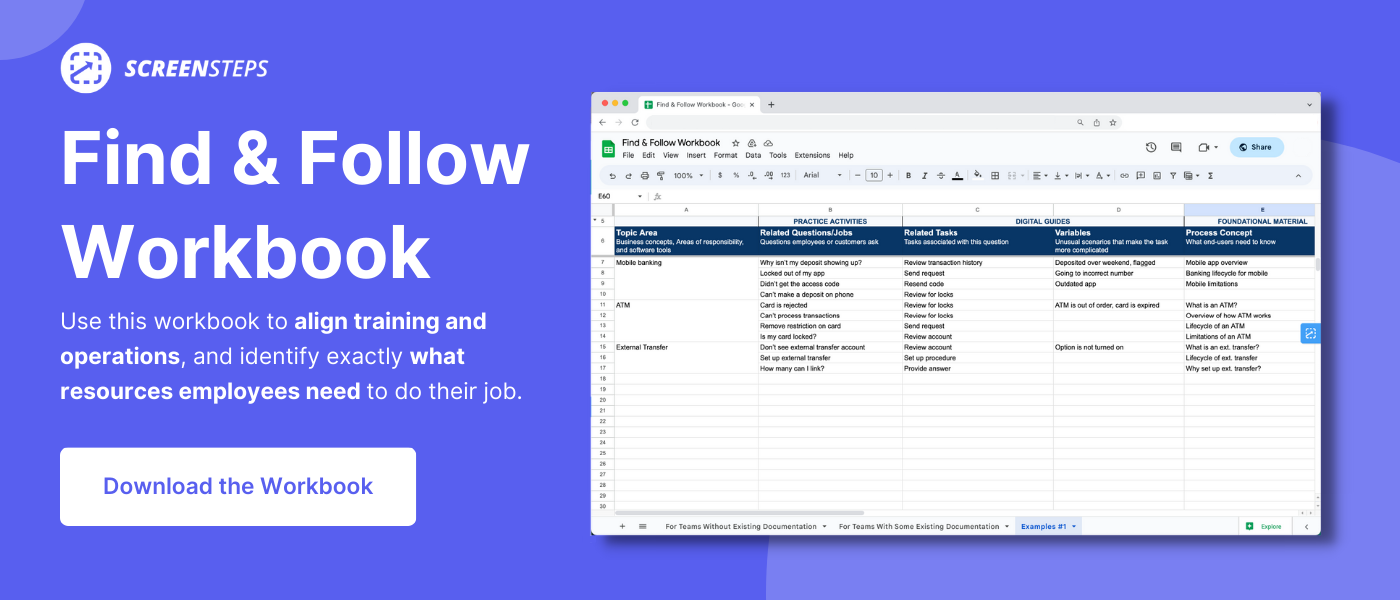How to Capture Tribal Knowledge (5 Steps)
When it comes to knowledge management, there’s nothing spookier than operating on tribal knowledge.
And, yet, businesses take the risk all the time. Vital company information lives in employees' heads. Then one day that employee quits and that knowledge walks out the door with them.
But, not your business! You're looking for a way to capture that company knowledge — and you want to get it right.
As the Head Consultant at ScreenSteps — a knowledge ops solution — I've helped businesses document their company policies and procedures for years. And what I've learned is capturing tribal knowledge takes more than just writing your procedures down.
Watch this 3-minute video for an introduction to the five steps that will help you capture tribal knowledge in your business. Then keep reading for more documentation tips to help you switch tribal knowledge for guided knowledge.
1. Identify what tribal knowledge you need to capture
Before you start writing down your standard operating procedures (sops), you'll first want to figure out what knowledge you need to capture.
There are a variety of different approaches to identifying that information.
Ask employees
The simplest option is to invite your employees to write down every task they perform in their day-to-day jobs. You'll want them to also write down jobs that they do less frequently (i.e. annual reviews, etc.).
The downside of this method is it leaves a high likelihood that things will be forgotten.
Data mine
Another approach is to data mine. Data mining is when you search your existing files — like your emails and Slack messages — to collect instructions that you have already written out.
Find & Follow Workshop
The most efficient way to ensure you identify all the knowledge you need to document is to run a Find & Follow Workshop.
The workshop helps your training and operations align. The collaboration helps you ensure you aren't missing any vital procedures.
2. Identify who has that knowledge
Once you know what information you need to capture, then you can identify the experts who know how to handle those procedures correctly. Figure out who your experts are in each of those areas.
The goal is to document the most efficient way to handle the tasks. That way, all of your employees can perform at the same level as your experts.
3. Document the knowledge
Now that you know what information you need to gather and who is the best person to get that information from, you can finally begin documenting the knowledge.
You can either invite your experts to document the procedures on their own or you can interview the experts and write the procedures down for them.
The goal is to write digital guides that are findable, followable, and scannable. You want employees to be able to pull up a guide and handle a procedure exactly as your experts would without needing to ask a supervisor for additional help.
4. Select a system for managing the knowledge
This step of the procedure doesn't need to be in any particular order. In fact, you probably want to choose a system before documenting your procedures.
This is, however, a VERY important step in the process. You need to select a knowledge management system.
The knowledge management system centralizes all your digital guides into one cloud-based location, making it fast and easy for end-users to access the guides they need.
Some software solutions you may consider include:
- Knowledge base software
- Knowledge ops platform
- Intranet
- Corporate wiki
- Another dynamic cloud-based system with interactive elements
5. Create a plan to keep your documentation up to date
Once your knowledge is documented and centralized in a system, your work still isn't done. When it comes to knowledge management, you need to be vigilant in keeping your guides up to date with accurate information.
When companies create digital guides and then forget about them, those guides become outdated, and employees no longer trust the guides, so they don't use the guide. And that means they fall right back into tribal knowledge.
To stay out of tribal knowledge, create a plan for regularly reviewing and updating your digital guides.
Escape tribal knowledge with a clear plan
It is easy to fall in and out of tribal knowledge. It's instinctive for employees to ask a neighbor or a supervisor for help.
However, when you document procedures and leave tribal knowledge behind, you enable employees to work more efficiently and independently.
With the ScreenSteps knowledge ops platform and Find & Follow Framework, we help companies move away from tribal knowledge and into guided knowledge. This cultural habit change begins with a Find & Follow Workshop.
You can run a Find & Follow Workshop on your own or you can hire a ScreenSteps expert to help your team. The workshop helps align your teams and make sure you cover every task your employees handle.
To help your team have a successful Find & Follow Workshop, download the Find & Follow Workshop Report. The free template will help you figure out which knowledge you need to capture and turn into digital guides.


.png)

